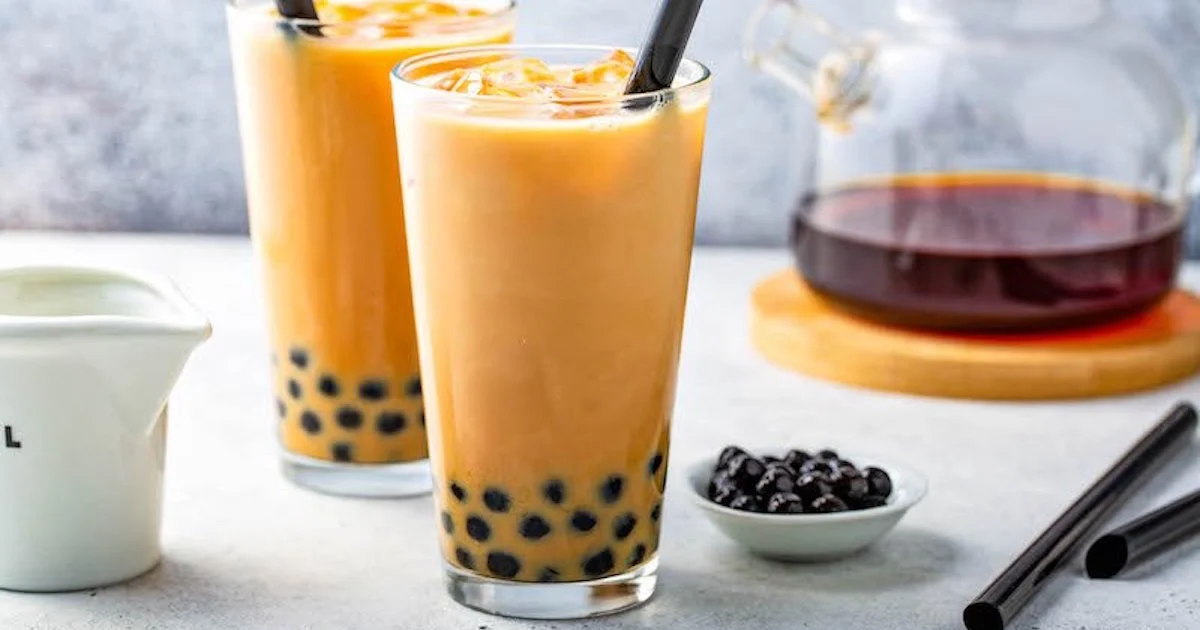Image From: Isha Kannan. Top: How bad can boba be when it tastes so good?
Bubble tea, better known to most of us as boba, originated in Taiwan in the 1980s and has since spread across the world. It was introduced in the United States during the 1990s, and by the 2010s, it had become a quick, delicious, and an irreplaceable beverage in Asian-American food. Bubble tea consists of milk, sweeteners, boba pearls, and other flavorings. The term “boba” technically does refer to each of the individual tapioca pearls, but most people do refer to the entire drink as boba. However, as it grows more popular, it becomes increasingly important to learn about its health concerns.
But first, what is boba actually made of? The tapioca pearls in boba are made from the starch of the cassava root, as well as sweet potato starch, and pose the most health risks within the drink. Tapioca is largely composed of carbs and has a high calorie content with minimal nutritional benefit. The fact that these pearls are frequently sweetened with syrups and sugar raises their calorie content even more.
The tea itself, which is usually a blend of green and black tea, is frequently mixed with sugar, artificial flavorings, and creamers that include high-fructose corn syrup or trans fats, chemicals that are very harmful to the body. Flavored syrups and powders, which include added sugar, preservatives, and other ingredients, are also used in the majority of boba drinks. When combined, these ingredients produce a drink that is heavy in sugar, bad fats, and empty calories, a combination that can be detrimental to your health in the long-term.
Some people don’t even realize that a single average sized boba tea (500 mL) contains three times more sugar than a can of coca-cola, making it one of the most sugary beverages in the world.
A lot of students here at Washington High School drink boba tea during lunch and after school. Anika Kannan (no relation to author), a sophomore at Washington, says that she drinks boba tea almost twice a week. She admits that having a large number of boba places near her house and going with her friends influences how often she consumes it. “If I go out with friends, the main place that we choose to go to is to get boba,” she says. She adds that she never really considered the health effects of drinking boba because she doesn’t know much about it.
It’s not only high schoolers that are pulled towards boba tea. 48 year old Fremont resident and health nut Vidya Kamal, says that even though she only has it as a treat, she loves the chewy texture of tapioca pearls and finds them delicious. She says when she gets boba, which is around once every two months, she always orders it with less or no sugar and non-dairy milk. As a mother of two teens who love drinking boba tea, she advises that when any young kids and high schoolers are deciding what boba tea they want, it’s best to avoid “milk teas with added coloring, like Thai tea,” and instead opt for ones without food coloring. While boba is definitely not part of a healthy diet, for those who still want to indulge, it’s best to modify the sugar levels in the drink and opt for healthier fruit tea options.
In moderation, boba can be an enjoyable treat, but it’s also important to consider the impact that frequently drinking boba tea can have on our body. Next time you’re ordering your favorite flavor of boba, ask yourself: is it really worth trading your health for a moment of sweetness?
Isha Kannan is currently a junior at Washington High School. She was born in Santa Clara, but has been living in Fremont since she was four. This is her second year working on The Hatchet and she currently holds the role of Opinions Editor. In the past, she has covered a variety of different topics such as health, new years resolutions, school programs, and more. She is excited to help new journalists with their writing and article ideas! Beyond writing, Isha loves going to debate tournaments, reading classic novels like Jane Eyre, parasailing, and practicing calligraphy. She is also one of Washington’s three SURFBoardE student representatives. In the future she hopes to go to university!

